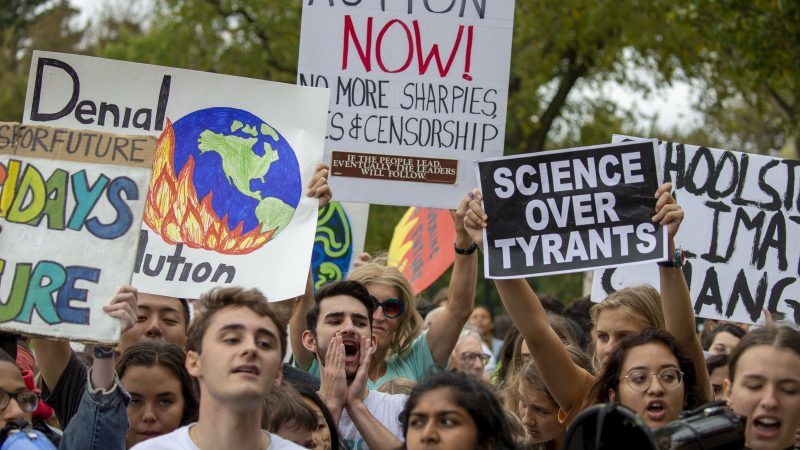Climate Activists Around the World Will Take to the Streets on Friday. Will Their Protests Matter?
Or, will global leaders ignore them just like they did the People's Climate March in 2014?

The Global Climate Strike scheduled for this Friday will see hundreds of thousands of school children and their supporters take to the streets around the world to "demand an end to the age of fossil fuels and climate justice for everyone." One especially big rally will be in New York City, where the United Nations is convening a Climate Action Summit of world leaders the following week. At the summit, countries are expected to ramp up their ambitions to curb their greenhouse gas emissions under the 2015 Paris climate agreement
New York City will allow its 1.1 million public school students to skip classes to participate in the protests, and scores of businesses have announced that they will be closed so that their employees can join in. At the moment, there are at least 800 strikes planned across all 50 states and people in 150 countries are planning to participate. The Climate Strikers acknowledge that "these Climate Strikes won't solve the climate crisis alone," but contend that "September's climate strikes will kickstart a huge wave of action and renewed ambition all over the world."
But will it? Five years ago, I reported on the People's Climate March which gathered in New York City at the beginning of another United Nations Climate Summit in 2014. Around 400,000 people marched down Sixth Avenue in New York and thousands more attended some 2,600 rallies in 162 countries around the world. "When the people speak up and when the people march, the politicians will follow," shouted Danny Kennedy, activist and founder of the solar company Sungevity in a pep talk before that March.
It is true that a year later, the countries of the world adopted the Paris agreement on climate change. Under that bottom-up agreement, signatories make voluntary commitments to limit their greenhouse gas emissions with the goal of keeping the increase of future average global temperature to well below 2 degrees Celsius above the pre-industrial level. Right now, the global average temperature is about 1 degree Celsius higher than the late 19th-century average.
Since the People's March, the annual global emissions of the chief non-condensing greenhouse gas carbon dioxide rose from 35.6 gigatons to 37.1 gigatons. The level of carbon dioxide in the atmosphere rose from 397 parts per million to 409 parts per million (this a 46 percent increase over the pre-industrial level of about 280 parts per million). The last five years were the hottest since relatively good records began in the late 19th century.
At the U.N. summit in 2014, Chinese Vice-Premier Zhang Gaoli declared, "Developed countries need to intensify emission reduction and fulfill their commitment of annual financial support of 100 billion U.S. dollars and technology transfer to developing countries by 2020." At the summit next week, China will again demand that rich countries honor their commitments to hand over $100 billion annually to help developing countries (including China!) cope with climate change.
Overall, earlier mass protests have not been self-evidently successful at getting politicians to follow and moving forward the political and economic agenda of climate activists. On the other hand, protests like this Friday's Climate Strike do capture the attention of the wider public. For example, a recent CBS News poll reports that 70 percent of Americans believe human activity contributes "a lot" or "some" to climate change and that 56 percent believe humans should act on climate change "right now." A Washington Post-Kaiser Family Foundation poll reported that 57 percent of American teenagers are afraid of climate change and 52 percent were angered by it.
With respect to publicizing climate movement's concerns, such protests do seem to be succeeding.


Show Comments (89)